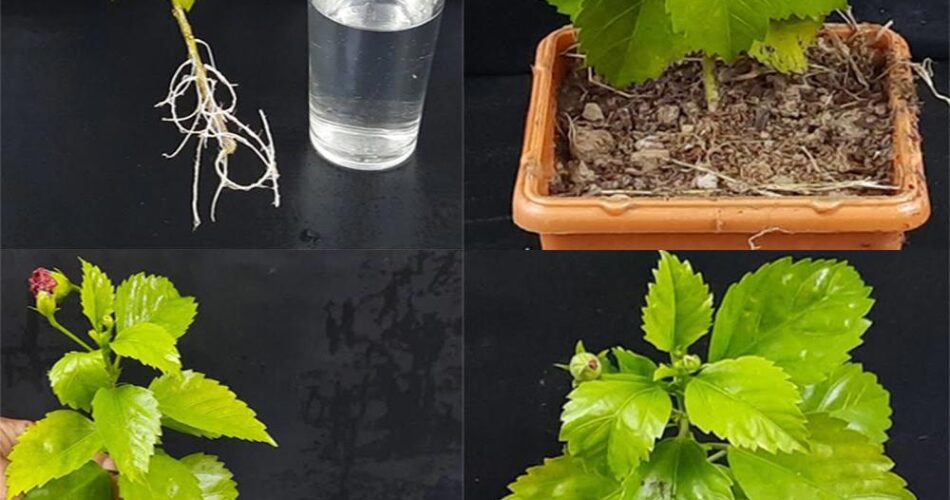How to Push Your Hibiscus Boutures More Quickly at Home
The hibiscus is a beautiful and popular plant for its bright flowers. If you want to spread your hibiscus or simply grow cuttings faster, the method of spreading in water is an effective solution. Here’s how to grow your hibiscus at home using this method:
1. Preparation of the Boutures
Start by taking healthy cuttings from a mature dihibiscus plant. The cuttings should be about 10-15 cm long and have leaves. Make sure to cut the cuttings just below a knot to promote root formation.
2. Placement in water
Fill a transparent vase with clean water at room temperature. Gently place the hibiscus cuttings in the vase, ensuring that the lower nodes of the cuttings are immersed in the water. It is essential to change water every few days to avoid the formation of bacteria.
3. Ideal conditions
The hibiscus cuttings will develop better in a bright place, but away from direct sunlight. Make sure the room temperature is stable and does not fall below 20°C. High humidity will also promote root growth.
4. Patience and Monitoring
Root growth can take a few weeks. Be sure to regularly observe cuttings to identify any signs of rot or disease. Do not hesitate to remove cuttings that do not appear to develop properly.
Cultivate Hibiscus in Water
In addition to spreading cuttings, hibiscus can also be grown directly in water. This method is ideal for observing root development and can be a fascinating project for gardeners. Here is how to proceed:
1. Choosing Tips
For this method, choose healthy hibiscus cuttings with several leaves. Make sure the stems are long enough to be immersed in water while leaving the leaves above the surface.
2. Immersion in water
Place the cuttings in a clean water container. Make sure only the lower nodes of the rods are immersed. Water must be changed regularly to maintain cleanliness and freshness.
3. Rooting
The cuttings will gradually develop roots in the water. You can observe this growth process by regularly checking the cuttings. Once the roots are sufficiently developed, you can transplant the cuttings into soil to allow further growth.
4. Maintenance
Make sure you maintain an adequate water level in the container so that the cuttings remain hydrated. Avoid placing the container in full sun to avoid excessive water evaporation. Monitor the appearance of roots and new leaves to assess the health of cuttings.
By following these simple steps, you can enjoy the beauty of hibiscus in your home while experimenting with an interesting culture method. Don’t forget to provide the attention and care necessary for your hibiscus to flourish fully.
